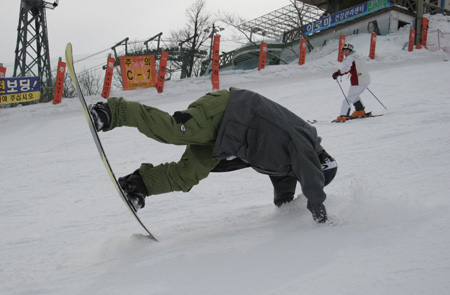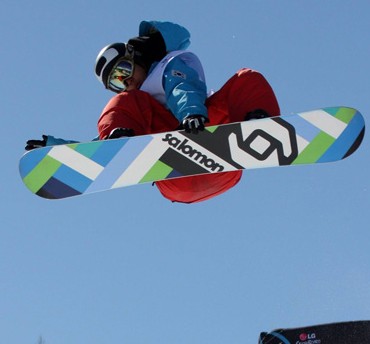- California Assembly OKs highest minimum wage in nation
- S. Korea unveils first graphic cigarette warnings
- US joins with South Korea, Japan in bid to deter North Korea
- LPGA golfer Chun In-gee finally back in action
- S. Korea won’t be top seed in final World Cup qualification round
- US men’s soccer misses 2nd straight Olympics
- US back on track in qualifying with 4-0 win over Guatemala
- High-intensity workout injuries spawn cottage industry
- CDC expands range of Zika mosquitoes into parts of Northeast
- Who knew? ‘The Walking Dead’ is helping families connect
Beware of winter sports injuries
By Song Sang-ho
Now we are back to skiing and snowboarding. More and more people are visiting resorts to enjoy those and other winter sports with their families and friends. However, they are advised to be careful because skiing or snowboarding involve risks of serious injury.
Those who ski need to watch out for leg injuries. As a matter of fact, most ski injuries are to the knee, including fractures or ligament damage, and 20 to 30 percent involve anterior cruciate ligament (ACL) ruptures. The ACL is one of the four ligaments of the human knee located at the front-center. This ligament connecting the thigh bone and calf bone allows the knee bone to resist any unwanted forward-backward movement. Despite its strength to hold and connect the two bones, the ACL is thin and easy to rupture by external stimulation or a sudden pivot movement.
If there is a tearing sensation with pain after you fall down while skiing, most likely the ACL is ruptured. If that is the case, you may not be able to walk normally and the knee will swell within two or three hours due to internal bleeding. Many people don’t get proper treatment as they mistake it as simple contusion. However, ACL rupture often requires complicated treatment including surgery, and it may lead to degenerative arthritis if left untreated. Thus, it is necessary to visit the clinic for a checkup if you still have pain four or five days after the injury.
Besides skiing, many young people enjoy snowboarding during the winter. Having your two feet fixed on the snowboard, however, makes the sport more dangerous than skiing. Unlike skiers who use poles, snowboarders use their hands and arms to balance and turn. When they fall down, their full bodyweight is loaded on their hands and wrists. This can lead to wrist injuries, and may eventually progress into degenerative arthritis. Please be aware of this, and get a checkup if your wrist does not feel right after a fall.
Normally, skiers fall sideways, but snowboarders fall vertically. This may cause a spinal or hip fracture. Please remember to stabilize the patient’s neck and back firmly while moving a patient to the hospital in order to prevent possible paraplegia. If you suspect a spinal injury, do not move the patient without the help of a medical professional to avoid paraplegia. For prevention of injuries, avoid excessive speeding and when you fall down, try to sit down slowly and gradually as you bend your knees and lower your hips to below the knees.
To avoid injuries while enjoying winter sports, make sure to keep the appropriate body temperature and relax the muscles and ligaments at all times. Before you go outside, do stretching exercises to relax the muscles. Taking a hot shower before and after an outdoor activity will also relax your tight muscles and ligaments. In case you get hurt, immediate cold massage, splint or other first-aid should be given as soon as possible.
For this winter, I recommend you wear proper protective equipment and follow the safety rules before engaging in cold-weather sports. I advise you to visit the clinic immediately even if you only sustain a minor injury. Especially for young people, early treatment can be highly effective and accelerate the recovery. With these tips in mind, I think you are now ready to participate in winter sports with your friends and family.
The writer is the president of Wellton Bone & Joint Hospital.















